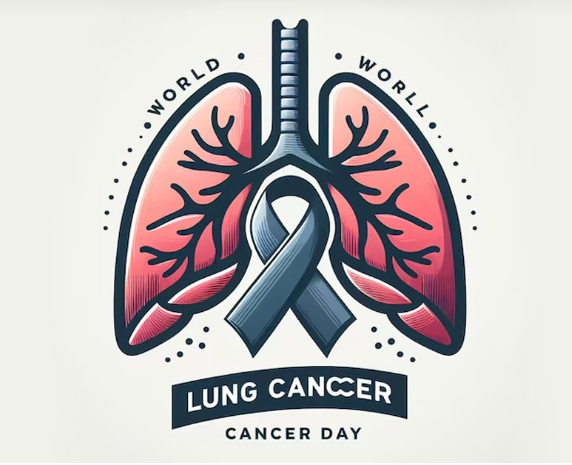As we observe World Lung Cancer Day 2024, it’s crucial to shine a light on one of the most significant yet often overlooked aspects of this disease: occupational hazards. Lung cancer, a leading cause of cancer-related deaths worldwide, can often be traced back to specific high-risk jobs. This article delves into the professions that pose a heightened risk of lung cancer, examines the reasons behind this increased risk, and emphasizes the importance of workplace safety.
World Lung Cancer Day 2024
Several professions expose workers to carcinogens that significantly increase their risk of developing lung cancer. These high-risk occupations include:
- Construction Workers: Construction sites are notorious for exposing workers to asbestos, a known carcinogen. Despite stringent regulations, older buildings undergoing renovation or demolition can still pose a threat.
- Miners: Mining is another high-risk occupation, particularly due to exposure to radon gas, silica dust, and diesel exhaust. Radon, a naturally occurring radioactive gas, is a leading cause of lung cancer among non-smokers.
- Industrial Workers: Employees in industries such as manufacturing, shipbuilding, and chemical production often come into contact with hazardous substances like arsenic, chromium, and nickel, which are linked to lung cancer.
- Firefighters: Firefighters are regularly exposed to a variety of toxic substances, including smoke, asbestos, and chemicals released during fires. These substances can significantly increase their lung cancer risk.
- Farmers: Pesticides, herbicides, and other chemicals used in agriculture can contribute to a higher incidence of lung cancer among farmers and agricultural workers.
- Welders: Welding fumes contain a mix of metals and gases that are harmful to lung health. Long-term exposure can lead to chronic respiratory issues and an increased risk of lung cancer.
Reasons for Increased Risk
The increased risk of lung cancer in these professions can be attributed to prolonged exposure to carcinogens. These substances can damage the DNA in lung cells, leading to mutations that cause cancer. Key carcinogens in the workplace include:
- Asbestos: Widely used in construction and shipbuilding, asbestos fibers can be inhaled and cause lung cancer and mesothelioma.
- Radon: This radioactive gas can seep into buildings and mines, exposing workers to harmful radiation.
- Silica Dust: Common in mining and construction, inhaled silica particles can scar lung tissue and lead to cancer.
- Diesel Exhaust: Emitted by diesel engines, this exhaust contains a mix of gases and particles that are carcinogenic.
- Chemical Fumes: Exposure to fumes from chemicals like benzene, formaldehyde, and certain metals can significantly increase lung cancer risk.
Importance of Workplace Safety
Ensuring workplace safety is paramount in reducing the incidence of lung cancer among workers in high-risk professions. Employers and workers must collaborate to implement effective safety measures. Key strategies include:
- Protective Equipment: Providing and mandating the use of personal protective equipment (PPE), such as respirators and protective clothing, can significantly reduce exposure to harmful substances.
- Ventilation Systems: Proper ventilation in workplaces can help to disperse hazardous fumes and dust, minimizing inhalation by workers.
- Regular Monitoring: Routine monitoring of air quality and regular health screenings for workers can help in early detection and prevention of lung-related diseases.
- Education and Training: Educating workers about the risks and proper handling of hazardous materials is essential. Training programs should focus on safe practices and emergency procedures.
- Regulatory Compliance: Adhering to occupational safety and health regulations is crucial. Employers should stay informed about the latest guidelines and ensure compliance to protect their workforce.
Case Studies and Real-Life Impacts
Several case studies highlight the severe impact of occupational hazards on lung health. For instance, the infamous case of Libby, Montana, where asbestos exposure from a vermiculite mine led to a public health crisis, underscores the dire consequences of inadequate safety measures. Similarly, the plight of miners suffering from silicosis in South Africa highlights the urgent need for stringent workplace safety regulations.
Conclusion
World Lung Cancer Day 2024 serves as a reminder of the critical need to address occupational hazards that contribute to lung cancer. By recognizing high-risk jobs and implementing robust workplace safety measures, we can protect workers from this deadly disease. Employers, regulators, and workers must work together to create safer working environments and reduce the incidence of lung cancer caused by occupational exposure.








